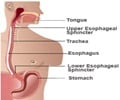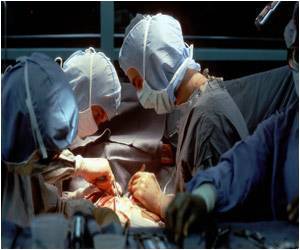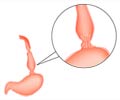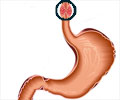
Using a new genetically engineered mouse model of esophagitis, the CUMC researchers have clarified critical cellular and molecular changes that occur during the development of Barrett's esophagus and EAC. In human patients, acid reflux often leads to overexpression of a molecule called interleukin-1 beta, an important mediator of the inflammatory response, reported study leader Timothy C. Wang, MD, the Dorothy L. and Daniel H. Silberberg Professor of Medicine at CUMC. Thus, Wang and his colleagues created a transgenic mouse in which interleukin-1 beta was overexpressed in the esophagus.
Overexpression of interleukin-1 beta in the mouse esophagus resulted in chronic esophageal inflammation (esophagitis) and expansion of progenitor cells that were sustained by the notch signaling pathway. Notch is a fundamental signaling system used by neighboring cells to communicate with each other in order to assume their proper developmental role. "When we inhibited notch signaling, that blocked proliferation and survival of the pre-malignant cells, so that's a new possible clinical strategy to use in Barrett's patients at high risk for cancer development," noted Dr. Wang.
For decades, investigators thought that the physiological changes associated with Barrett's esophagus originate in the lower esophagus. "However, our study shows that Barrett's esophagus actually arises in the gastric cardia, a small region between the lower part of the esophagus and the upper, acid-secreting portion of the stomach," said Dr. Wang. "What happens is that the bile acid and inflammatory cytokines activate stem cells at this transition zone, and they begin migrating up toward the esophagus, where they take on this intestinal-like appearance."
The researchers also demonstrated that these changes occur primarily in columnar-like epithelial cells, rather than in goblet cells, as was previously thought.
"All told, the findings present a new model for the pathogenesis of Barrett's esophagus and esophageal adenocarcinoma," said Dr. Wang.
Advertisement
Treatment with acid-reducing drugs can lessen symptoms of GERD and lower the chances of developing Barrett's esophagus and EAC. Low-grade EAC is highly treatable with endoscopic radiofrequency ablation, photodynamic therapy, or surgical resection. Patients with severe disease may require open surgery, in which most of the esophagus is removed. The overall five-year survival rate with advanced disease is about 25 percent.
Advertisement















